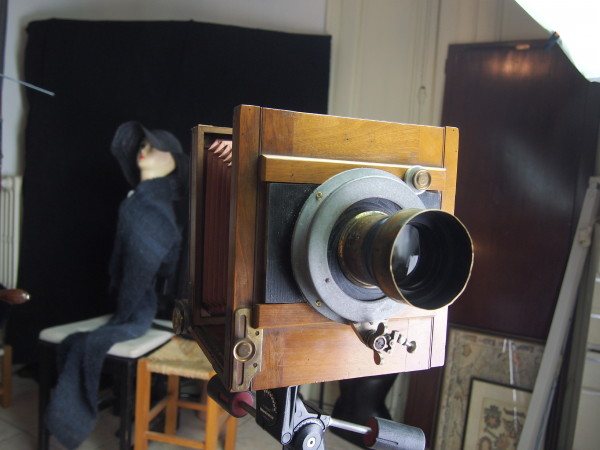At last, after too many years of ‘thinking and talking about it’, I am working methodically and steadily to get back to where I was many years ago.
In the 1970s and 1980s I was a working professional photographer, with a good reputation, regular top clients with awards and exhibitions.
I stopped – a total life change and later health problems spun me round and round like Dorothy in Kansas.
I now find myself waking up, not in Oz, but in a wonderful home with a super wife and amazing children in the South of France and I am a photographer again.
I recovered my health and for the last three years I have practised and studied photography. I tried to start again where I left off – but I was a ‘Stranger in a Strange Land’, So much has changed. I have the advantage of having been trained in what is now referred to as analogue photography, the kind that uses film and chemistry to make a print to show people, not a computer screen and software. I see things as reflected light, not as a light source. I see things in my head, not on a small screen. I have to keep hold of the thought of my image for many hours before I can realise it and I can only capture a very few of these thoughts in the chemistry so every one has to count.
When I stopped, I was living in Edinburgh, just starting to work in platinum printing, so my first thought three years ago was to start there again. I went to the UK to go on a course in platinum printing, but this was cancelled so I attended a workshop run by John Brewer on collodion, wet-plate photography.
My tutors in art school and college did not teach wet-plate collodion, it was just mentioned in the history of photography. In my professional career I used Polaroid a lot, mostly 5x4inch, for a lot of testing and some creative work – along with some tableaux of SX70 stuff and experimental work – but my grounding was in large format photography, Ektachrome for commercial stuff and 6x6cm Hasselblad for portrait and ‘taking snaps of girls in frocks’ (or often not in frocks). My personal stuff is nearly all black and white and I was a very good printer.
Going back 150 years to learn collodion techniques did not seem a progressive step, but the flood of rubbish produced by modern digital recorders and the subsequent fall in the perceived worth of a photographic image, posed a problem.
If I was to re-establish myself as a photographer, I needed not only to now work with a very restricted palette of materials and equipment, but to learn how to look at this new world around me with my new eyes. I had quickly rejected the digital stuff as poor quality both for creative purposes; poor definition, loss of feeling for the medium, no camera movements to record what I visualised and could share – so many many things had been tossed away for the profits of the manufacturers and sold to the public as fashion accessories.
It is wonderful to find that equipment I once aspired to own and could not afford could now be bought for very little. Some stuff has become a fashion accessory – Polaroids, Leicas and Hasselblads fetch highish prices today, but they are still a fraction of what they cost me when I worked with them in the 1970s.
But the truth and verity (arete) of wet-plate had got into my soul. So I have been practising and practising for three years, as well as working with 5×4 film.
The low cost of equipment and the convenience of ebay, plus interest of collectors in buying old quality cameras for very little money has meant I have acquired a shed full of junk from which I am now selecting those items I will now be working with.
I tend to find myself going back to the 19th century for so many of my ideas. I am now working with 5x7inch (13x18cm) as my standard format and working with 24x30cm plates for negatives. The larger plates are only collodion and contacted printed onto chloride papers – but with 5×7 I have the choice of analogue film or wet-plate. The 5×7 inch format is a very pleasing size, not hard and angular like 10x8inch – it is also a lot less expensive to buy, easier to make and equipment is easily found.
One problem was to get a simple good 5×7 field camera. I do have a 5×7 Sinar P – but this is awkward on location, it is great in the studio. There are plenty of half plate cameras in junk shops and ebay still – but the plate holders are a pain, also changing lenses is awkward.
So I have solved this by adapting a half plate camera to a 5x7inch sinar back and fitting an old lens iris which can take lot of lenses.
At the same time I adapted my full plate (18x34cm) studio camera to take a 5x7inch back – it also has half plate back, but using a selection of modern plate holders is much less of a faff than keeping on repairing the old plate holders, all of which are different, making getting the depth of focus spot on is a bore – so my working cameras are all hybrids now (apart from my ‘modern” 1960 Sinars).
Here are some snaps of the adaptations I have made to a couple of old cameras to work with both the modern films and wet-plate medium.

My Studio Camera, fitted today with a 30mm Berthiot Flor – I use a 385mm Rodenstock Peztval and a 500mm Taylor Hobson as xell with this camera






